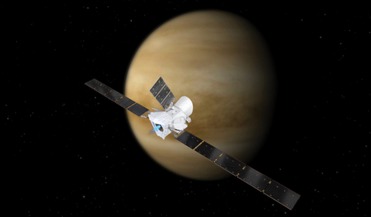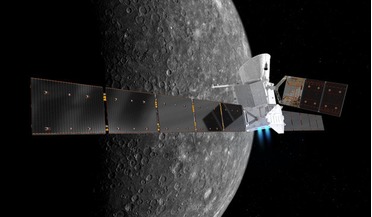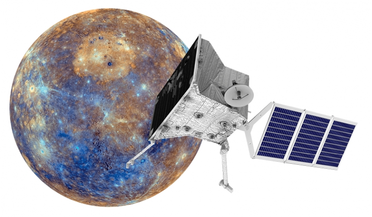 November 2018
BepiColombo – a mission to explore Mercury
November 2018
BepiColombo – a mission to explore Mercury
...it is thermally protected by a sunshield. Artist’s impression of the upper stage and payload launch adapter separating from the BepiColombo spacecraft stack about 30 minutes after launch. At this stage, the solar wings of the spacecraft remain closed...
 09 October 2020
BepiColombo could search for signs of life as it flybys Venus next week
09 October 2020
BepiColombo could search for signs of life as it flybys Venus next week
... get within 10 720 kilometres of Venus on its way to explore the smallest terrestrial planet in the Solar System. BepiColombo consists of two scientific orbiters: the European Mercury Planetary Orbiter (MPO) and Japan's Mercury Magnetospheric Orbiter...
 19 October 2018
Countdown begins for the launch of BepiColombo
19 October 2018
Countdown begins for the launch of BepiColombo
... a small corridor in which the solar arrays can be operated to fulfil both of these constraints,” adds Budnik. Before BepiColombo gets there however, it will undertake nine planetary flybys at a top speed of 60 kilometres per second, using electric...
 16 October 2020
BepiColombo’s first glimpse of Venus
16 October 2020
BepiColombo’s first glimpse of Venus
... and six at Mercury to brake against the gravitational pull of the Sun in order to enter orbit around Mercury. BepiColombo, which comprises ESA’s Mercury Planetary Orbiter and the Mercury Magnetospheric Orbiter of the Japan Aerospace Exploration...
 June 2017
Bepi-Colombo will unveil Mercury’s secrets
June 2017
Bepi-Colombo will unveil Mercury’s secrets
... spectral mapping of the surface of Mercury with a better resolution than MESSENGER and in a different wavelength range. Finally, BepiColombo will look for the crater left by MESSENGER on the surface of Mercury in 2015 and study it to understand the...
 27 March 2020
Mercury's crust could have had episodic habitable conditions, new study says
27 March 2020
Mercury's crust could have had episodic habitable conditions, new study says
Having almost no atmosphere to retain heat, a surface similar in appearance to that of the Moon, and being so perilously close to the Sun, it is hard to imagine that our smallest and innermost planet in the Solar System – Mercury – could once have ...